
by Mark Smiley | Oct 23, 2017 | General Featured
Celebrating Its 10th Anniversary, Attendees Can Choose From Music, Dance, Film Author Lectures
 The Valley isn’t lacking for festivals, but a select few consistently find a way to differentiate themselves in a crowded field. The 10th annual celebration of Jewish Arts, Authors, Movies & Music Festival (JAAMM) has distinguished itself from the crowd. The 18-day one-of-a-kind culture extravaganza opened Oct. 26 and Valley residents have an array of awesome choices as events continue through Nov. 12 at the Mizel Arts & Culture Center (Jewish Community Center).
The Valley isn’t lacking for festivals, but a select few consistently find a way to differentiate themselves in a crowded field. The 10th annual celebration of Jewish Arts, Authors, Movies & Music Festival (JAAMM) has distinguished itself from the crowd. The 18-day one-of-a-kind culture extravaganza opened Oct. 26 and Valley residents have an array of awesome choices as events continue through Nov. 12 at the Mizel Arts & Culture Center (Jewish Community Center).
The wide variety of November choices contrast from a showing of Ron Suskind’s award-winning film, Life, Animated, to the keynote speech by renowned film critic and historian Leonard Maltin. Also this month audiences can enjoy the Stomp-style Israeli percussion, dance troupe Tararam and acclaimed Israeli-American jazz pianist Tamir Hendelman plus operatic bass Anthony Mordechai Tzvi Russell, performing traditional Ashkenazi Jewish and African American music.
Celebrating the festival’s 10th anniversary there is a wide array of programming choices. Among the lineup of events remaining, several top selections stand out and are not to be missed:
Author Lectures
Author and Rabbi Naomi Levy has penned a book based on a poignant letter written by the 20th century’s most influential physicist Albert Einstein. She talks about the book titled Einstein and the Rabbi: Searching for the Soul in the Phillips Social Hall Nov. 2, 2 p.m. His words captured what she believes to be true about the human condition and how we are all intimately connected.
That evening in the Wolf Theatre renowned civil rights activist and speaker Morris Dees speaks at 7 p.m. He discusses how our commitment to justice for all will chart our nation’s future as America becomes more diverse and as economic disparity widens. Dees will share his experiences and insights, explaining why he became an attorney and founded the Southern Poverty Law Center. Prior to his talk there is a private reception from 5:30-6:30 p.m.
The author of Sons and Soldiers written by Bruce Henderson is another lecture you won’t want to miss. He tells the little-known stor y of nearly 2,000 German-born American Jews who enlisted in the U.S. Army and were sent overseas as a special unit interrogating German POWs. Known as the “Ritchie Boys,” their contributions in fighting Hitler were invaluable. He speaks in Phillips Social Hall Nov. 7 at 11 a.m. and the lecture is free for veterans.
y of nearly 2,000 German-born American Jews who enlisted in the U.S. Army and were sent overseas as a special unit interrogating German POWs. Known as the “Ritchie Boys,” their contributions in fighting Hitler were invaluable. He speaks in Phillips Social Hall Nov. 7 at 11 a.m. and the lecture is free for veterans.
Dance & Film
You’ll enjoy the excitement, beauty, timing and precision of dance when the Wonderbound Dance Company performs in the Wolf Theatre Nov. 9, 7:30 p.m. With live music accompaniment by Hal Aqua & The Lost Tribe, this is a high octane, humorous and poetically athletic extravaganza.
Described as one of the most truthful films about show business, see the documentary film Joan Rivers: A Piece of Work, showing in the Wolf Theatre Nov. 5, 7 p.m. It exposes the private dramas of the irreverent, legendary comedian and pop icon Rivers. Moreover, it is very funny.
Documentary film Mr. Gaga shows in the Wolf Theatre Nov. 12, 11 a.m. It tells the story of Ohad Naharin, the renowned choreographer-artistic director of Israel’s Batsheva Dance Company. Footage of intimate rehearsals and breathtaking dance sequences make this a breathtaking film.
Music & Singing
Drum-up friends and family to enjoy the Israeli Stomp-style drum and dance sensation Tararam at the Wolf Theatre on Nov. 4, 7:30 p.m. These performing artists produce a blend of rhythm, music, movement and wit, interwoven with choreographed body drumming, amusing sounds and theatrical antics.
Then on Sunday, Nov. 5 at 1:30 p.m. catch the Anthony Mordechai Tzvi Russell concert also in the Wolf Theatre. His singing combines 100 years of traditional Ashkenazi Jewish and African American music. Accompanied by Dr. Alan Mason his concert recently sold-out at the Berkeley Jewish Music Festival.
For many people there’s no better music than jaz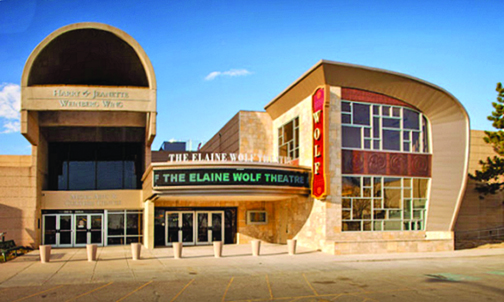 z and if you’re one of them don’t miss award-winning jazz pianist Tamir Hendelman and his trio playing in the Wolf Theatre Nov. 11, 7:30 p.m. Playing alongside upright bassist Alex Frank and jazz drummer Dean Koba they are a phenomenon. Together the trio explores jazz standards, Brazilian music, blues and Tamir’s Israeli roots.
z and if you’re one of them don’t miss award-winning jazz pianist Tamir Hendelman and his trio playing in the Wolf Theatre Nov. 11, 7:30 p.m. Playing alongside upright bassist Alex Frank and jazz drummer Dean Koba they are a phenomenon. Together the trio explores jazz standards, Brazilian music, blues and Tamir’s Israeli roots.
The festival is open to the entire Cherry Creek Valley and features a wide array of multidisciplinary programs in addition to those listed. There’s plenty more to see and experience. Information: 303-316-6360 or maccjcc.org/jaamm.
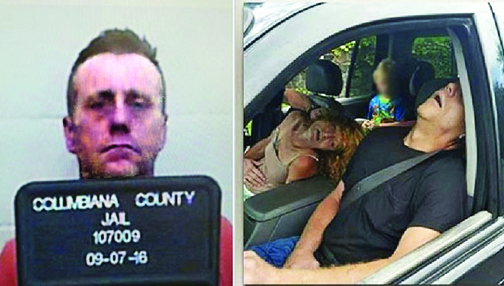
by Mark Smiley | Sep 25, 2017 | General Featured
by Julie Hayden
 The little boy was just seven years old when he was brought to the Tennyson Center in Denver. It’s a refuge of last resort for children who have been abused, neglected or traumatized. Tennyson Center CEO Ned Breslin says this boy had been removed from the place he and his heroin-addicted mother had been staying. “His mother was bringing men to the apartment who paid her for sex and she then spent the money on heroin, not her son,” Breslin says. The boy was scared, significantly underweight and malnourished. Fortunately, teachers noticed he had “disappeared” from school and contacted authorities that stepped in. Breslin says the tragedy is, this boy’s story is becoming far too common in Colorado.
The little boy was just seven years old when he was brought to the Tennyson Center in Denver. It’s a refuge of last resort for children who have been abused, neglected or traumatized. Tennyson Center CEO Ned Breslin says this boy had been removed from the place he and his heroin-addicted mother had been staying. “His mother was bringing men to the apartment who paid her for sex and she then spent the money on heroin, not her son,” Breslin says. The boy was scared, significantly underweight and malnourished. Fortunately, teachers noticed he had “disappeared” from school and contacted authorities that stepped in. Breslin says the tragedy is, this boy’s story is becoming far too common in Colorado.
Like the rest of the nation, heroin and opioid abuse is skyrocketing in Colorado. Colorado Health Department statistics show 2016 saw a record number of opioid overdose deaths in Colorado — 912 people. That far surpasses the 600 people who died in traffic accidents.
There’s been a lot of talk and task forces focused on adults and the opioid crisis. But Breslin says children are the unseen and forgotten casualties of the opioid crisis. “The kids fall through the cracks.”
The Tennyson Center, founded in 1904, has a mission of empowering children who have experienced abuse, neglect and trauma to bravely and safely change their life’s story. It helps 200-300 local children and families each month. Breslin says, “We’re seeing a real disintegration of families. We’re seeing a real pressure from the opioid and drug epidemic that is ravishing our country and our state.”
The statistics are both staggering and heartbreaking. Breslin notes, “There’s been an 81% increase in the number of kids taken out of their homes over the last two years in Denver alone. And there’s been a 70% increase in abuse and neglect investigations in Denver.” Much of that is fueled by the opioid crisis. Breslin says, “The whole child welfare system is buckling under the pressure.”
Programs like the Tennyson Center are struggling to handle what he calls “the flood” of kids coming into the system. “We are seeing at Tennyson kids being taken from their homes who have been pimped out to pay for their parents’ drug habits. We are seeing kids who are 20-30 pounds underweight because their parents choose drugs over feeding their children. It’s a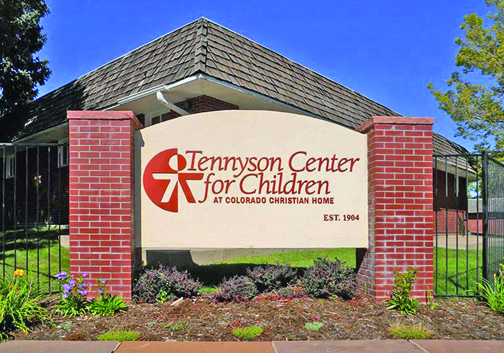 real problem.”
real problem.”
Tennyson Center, like other similar organizations, is at capacity and searching for ways to fill the growing need. Breslin describes their developing “No Kid Waits” program. “When you have a family and children in crisis it just doesn’t work when you have to tell them you’ll put them on a week-long waiting list. The crisis just gets worse. We have to find ways to get immediate help to these kids.”
The need for help is obvious but how to help is not so clear. Breslin explains it’s difficult enough to work with the kids who have been abused and/or neglected by an opioid addicted parent. But he says you also have to deal with the separation issue. “Mom is going through detox, the legal situation, but at the same time the kids miss her and want to reunite. The path to get kids stabilized and then back with their families is not very clear or easy to navigate.”
“If we can sit back as a society and say what should we really invest in — kids who are in this situation, how can we invest so there are better outcomes. We don’t need more money, we need to move in different ways,” Breslin asserts.
“We just have to realize all the stuff you’re seeing on the surface of the drug abuse and parents in crisis is true and we have to do something about it because we can’t forget the kids.”

by Mark Smiley | Aug 30, 2017 | General Featured
by Julie Hayden
It’s a peaceful neighborhood tucked just around the corner from Exposition and Quebec. The yards are carefully tended; flowers bloom and shady trees line the street in front of beautifully maintained homes.
But one house in this quiet neighborhood stands out like a sore thumb. “It’s an eyesore,” complains neighbor Deborah Costin. “The place is a mess. The grass is dead and full of weeds. A tree in the front yard is dead. The exterior paint is peeling and there is trash.”
Normally neighbors would take their complaints to Denver  City inspectors. But that doesn’t do any good in this case because the rundown property at 716 South Poplar in Denver, is owned by the City and County of Denver.
City inspectors. But that doesn’t do any good in this case because the rundown property at 716 South Poplar in Denver, is owned by the City and County of Denver.
Public property records show the three bedroom, two and half bath home with 2,268 square feet was built in 1964. In August 1998, the owners sold it to the City and County of Denver for $209,900. According to public records, a few months later, in October 1998 the City gave it to the Denver Urban Renewal A uthority, the property was rezoned and a year later DURA turned it over to Redi Corporation, which contracted with Mental Health Center of Denver (MHCD) to operate it as a group home for mentally ill residents.
uthority, the property was rezoned and a year later DURA turned it over to Redi Corporation, which contracted with Mental Health Center of Denver (MHCD) to operate it as a group home for mentally ill residents.
According to news reports and official City documents, the home was one of several Denver “scurried” to purchase to comply with a court order following a settlement in a lawsuit filed regarding mental health housing.
The City of Denver hurriedly rezoned the residential property to allow a group home, over the strenuous objections from the neighborhood association and individual neighbors.
But in spite of the frequent paramedic, fire and police sirens responding to 9-1-1 calls from the address the neighbors say they came to accept the group home in their midst and the property was kept in good condit ion.
ion.
That all changed when MHCD closed the group home and on March 25, 2016, the property was turned back over to the care and ownership of the City and County of Denver.
Costin says, “It’s been a year and a half of the house sitting there empty and steadily deteriorating. “She has pictures showing the yard sprouting only weeds with the grass long since dead. Other pictures show aging paperwork stuck in the door from the State of Colorado demanding information about a required inspection. There appears to be a hole in the eaves under the roof, the paint is peeling, roofing materials left as trash sit alongside the house.
“Who knows what is going on in the back as part of the fence fell down,” Costin adds.
The neighbors also have concerns about the inside of the house. They say last winter two neighbors walking their dogs noticed water pouring out the front door, down the sidewalk and into the street. They called 9-1-1 and the fire department responded and shut off the water. But nothing else was done for weeks and neighbors speculate there could be a serious mold problem.
Costin also questions whether the City of Denver is being a good steward of taxpayers’ dollars when it comes to this property. Sold in 1998 for the $209,900, Zillow and other real estate sites estimate the home is worth more than double that today, putting it around $560,000. And while public t ax assessment records show neighboring families are paying thousands of dollars in property taxes the City and County of Denver pays absolutely no taxes on 716 S. Poplar.
ax assessment records show neighboring families are paying thousands of dollars in property taxes the City and County of Denver pays absolutely no taxes on 716 S. Poplar.
Costin says, “Whatever upkeep is being done, utilities or insurance that are being paid is at taxpayer expense and the property value is rapidly plummeting given the deterioration of the house and yard.”
Costin and other neighbors ask, why doesn’t the City of Denver simply sell the property and let a new homeowner who will actually take care of the home enjoy it. “Why not put the property on the market so it could return to being a single-family residence in keeping with the neighborhood?”
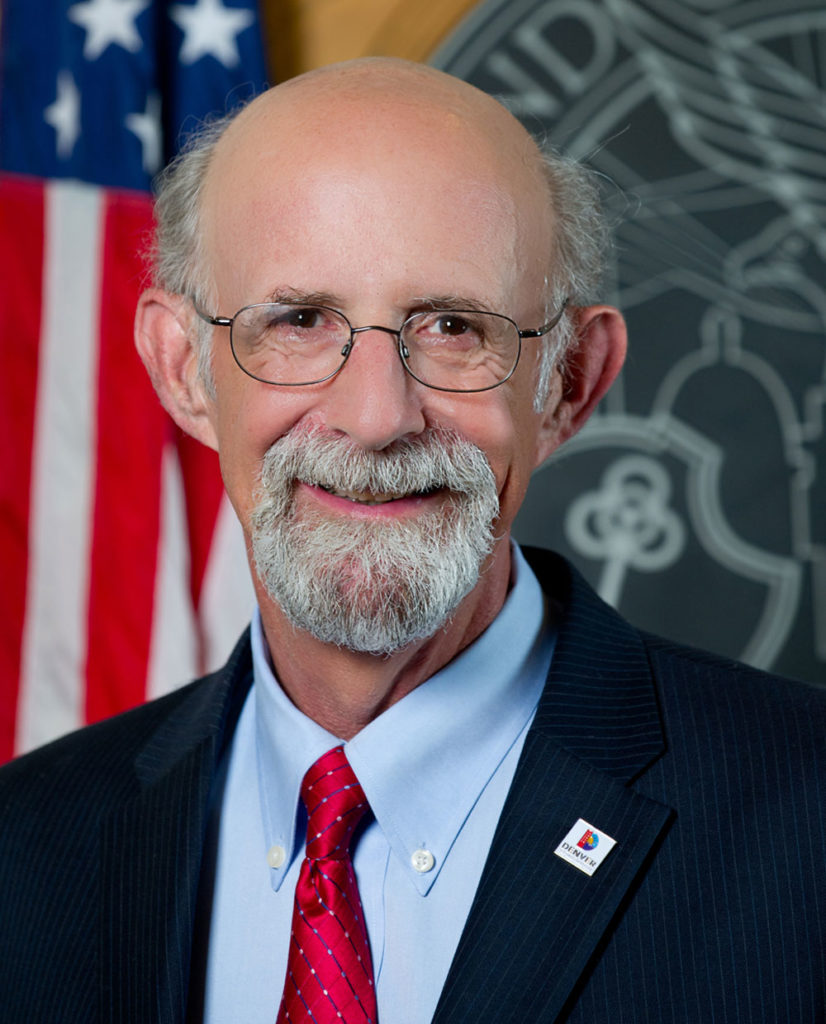
Denver City Councilmember, Paul Kashmann
Denver City Councilman Paul Kashmann, whose District Six includes the South Poplar street neighborhood, says the City of Denver has no plans to sell the property. He explains Denver is in negotiations with a non-profit service provider to turn the house into a group home for homeless women to help them get back on their feet. He says the organization is in the process of applying for grants to fund the program and take over the property.
Kashmann says he understands the neighbors’ frustration with the deteriorating condition of the property, “Without question if I were a neighbor I would not be pleased,” Kashmann says. He adds he will see what he can do to push the City to take better care of the property in the meantime.
Denver City spokeswoman Courtney Law says the City has programs to provide regular maintenance of properties it owns and after being contacted by the Chronicle she passed neighborhood concerns to the maintenance people and says they will respond.
Neighbors remain skeptical and are not happy about the prospect of another group home at the property. Costin says, “Is that the best use for that house? No. It was a bad idea in 1998 and it’s a bad idea now.”

by Mark Smiley | Jul 24, 2017 | General Featured
by Julie Hayden

George H. Solich, President and CEO

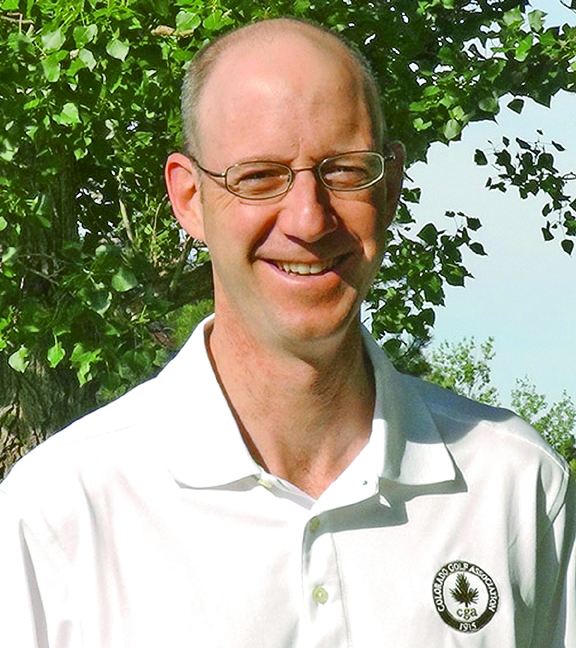




 Merriam-Webster Dictionary has myriad definitions for the word “common” including that the word means “falling below ordinary standards,” “lacking refinement,” and “characterized by lack of privilege or special status.” Undoubtedly, the Colorado Golf Association intended, when it named the golf course it owns and operates, that the complex met the main definition of the word that it “relates to the community at large.”
Merriam-Webster Dictionary has myriad definitions for the word “common” including that the word means “falling below ordinary standards,” “lacking refinement,” and “characterized by lack of privilege or special status.” Undoubtedly, the Colorado Golf Association intended, when it named the golf course it owns and operates, that the complex met the main definition of the word that it “relates to the community at large.”
But what is happening at CommonGround Golf Course is in fact “extraordinary” and “phenomenal.” For $45 you can play one of the great golf courses in the Denver area designed by world class golf architect Tom Doak. The course is located off Havana Street between Alameda Avenue and East First Avenue. But that is not all. The CGA will give you your own free personal caddie for 18 holes.
You, of course, would want to tip your caddie as you would a waiter at a restaurant, but that is up to you. You already belong to the CGA if you have a Colorado golf handicap. Joining the CGA only costs $35 and it will allow you to obtain a handicap along with other privileges of membership. For non-CGA members the round costs $54.
How can such an incredible bargain possibly exist?
The Colorado Golf Association was founded in 1915 and had always wanted to have its own golf course. In 2005, in partnership with the Colorado Women’s Golf Association, it was able to acquire the old Mira Vista Golf Course from the Lowry Redevelopment Authority. The course was part of the former Lowry Air Force Base. Tom Doak agreed to design a new course for a nominal fee. Doak is one of the most admired golf architects in the world having designed such top ranked courses as Cape Kidnappers in New Zealand, Barnhougle Dunes in Australia, and Pacific Dunes in Bandon, Oregon. He also designed at CommonGround a separate nine-hole short course for junior golf and player development.
Since the CGA is a non-profit it is not trying to make money off the golf course but rather further the development of golf in Colorado. In fact kids play for free on the nine-hole golf course.
In 2012 oil and gas magnate George Solich and his wife Carol seeded the Colorado Golf Foundation with a donation of $ 2 million. In the early ’70s, George’s brother Geoff got him a job as a caddie at Cherry Hills Country Club. The brothers’ family had modest means and the caddie job resulted in George receiving an Evans Scholarship at the University of Colorado. Evans Scholarships are limited to kids who caddie for a minimum of two years, plus other requirements. Tuition-free housing at the Evans Scholars Scholarship House, which recently went through a $5 million renovation, is part of the scholarship.
The Solich Caddie & Leadership Academy provides a two-year caddie training program in which 14 and 15-year-olds develop leadership skills and enhance character through a foundation built around caddieing.
The executive director of the CGA Ed Mate was as a teenager a caddie at the Denver Country Club and an Evans Scholar at CU. “Caddieing taught me work skills, how to be responsible and how to deal with adults,” states Mate.
Chuck Bonniwell, Publisher of the Glendale Cherry Creek Chronicle, was also a caddie in his teenage years and he declared, “Caddieing was the first job I ever had and I probably learned more from it about people and human nature than virtually any other job I have ever had.”
The caddies are given a $1,200 scholarship by the Academy to be used for college provided they caddie 36 rounds, attend a leadership conference once a week, volunteer for six hours of work (which can be at a kids’ development program at CommonGround) and keep a monthly work log. The leadership sessions are based around the “Cowboy Code of Ethics.” See below.
In order to be accepted into the Solich Academy you must have completed 8th grade, show academic excellence, demonstrate financial need (family income should be around $80,000 or less) and show a positive attitude and work ethic.
After completion of the two-year program the graduates are recommended to top clubs in the Denver area including Cherry Hills Golf Club and the Denver Country Club, which are thrilled to have already trained caddies ready to go. All such caddies become eligible to be Evans Scholars at the University of Colorado.
Surprisingly there are far more teenagers who want to go to the Solich Academy and are fully qualified than there are spots available at CommonGround. Mate indicates “A lot of golfers think a caddie is only for the rich or low handicap players. Caddies make the golfing experience incredibly more enjoyable and having a caddie usually results in you having a lower score. Once a person takes out a caddie at CommonGround they seldom want to go back to a cart especially since a cart costs a significant amount of money and the caddies are free.”
“The CommonGround caddies do not care that you are not Tiger Woods,” added Mate. “They are working on a college scholarship. They want you to have an enjoyable experience and thereby earn a good tip. They are there to help you in any manner they can.”
In order to reserve a tee time at CommonGround and sign up for a free caddie, call 303-340-1520. Caddies are available from Memorial Day through Labor Day. For information about the course, visit www.commongroundgc.com and Facebook @CommonGroundGC. Follow them on Twitter @CommonGroundGC.
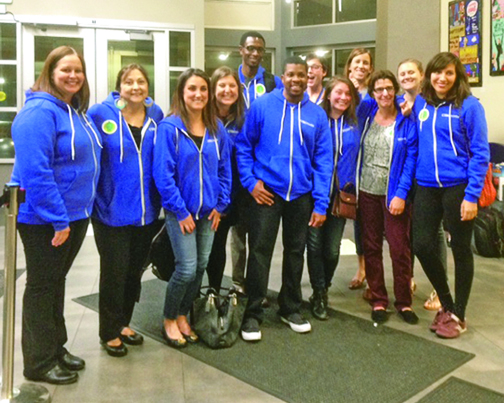
by Mark Smiley | Jun 23, 2017 | General Featured
DPS Board Votes Unanimously In Reynolds’ Favor
by Ruthy Wexler
 In an extraordinary reversal of fortune, The Denver Public Schools Board of Education at its meeting on June 19, 2017, chose existing Greenlee Elementary School Principal Sheldon Reynolds to lead the restart of Greenlee in 2018-19. He will keep his staff for this next school year and for the upcoming restart, which will be under a new name, Center for Talent Development at Greenlee (CTD).
In an extraordinary reversal of fortune, The Denver Public Schools Board of Education at its meeting on June 19, 2017, chose existing Greenlee Elementary School Principal Sheldon Reynolds to lead the restart of Greenlee in 2018-19. He will keep his staff for this next school year and for the upcoming restart, which will be under a new name, Center for Talent Development at Greenlee (CTD).
If Reynolds hadn’t been chosen to lead the restart, he would still be acting principal of Greenlee in the 2017-18 school year, but it would have been a year filled with sadness, teacher unrest, staff seeking employment at other schools — and his own disappointment at not being able to continue the work he had begun.
The Board had designated Greenlee as “persistently low-performing,” along with another elementary Denver school in December 2016 (still another elementary school, Gilpin Montessori, was closed for good due to failure of test scores to improve sufficiently. Under the recently adopted School Performance Compact (SPC) subjective factors are eliminated and a purported objective mandate based on primarily test scores control. See Greenlee Elementary On The Chopping Block, front page Glendale Cherry Creek Chronicle, March 2017.
The outcry from the parents, students, teachers and others involved with the school, which is located at 1150 Lipan Street, was immediate. In the first 18 months of Reynolds’ tenure at Greenlee morale and test scores had soared but simply just not enough under the criteria set out in the SPC. Greenlee faces a plethora of challenges including the fact that it is a school with a majority of low income students for whom English is a second language.
The competition for the restart was opened to any school providers who wanted to submit a “high quality” plan, according to DPS’s requirements.
Reynolds made a presentation along with a half dozen other applicants at the School Board meeting on May 11. After the June 19 Board vote the only real change in Greenlee Elementary will be its name,
which will now be Center for Talent and Development at Greenlee and that is just fine with the community surrounding the school which had come to embrace Reynolds and his reform efforts.
Reading teacher Lisa Friedman whooped with joy at the news. “Now we can continue the work we started. I can’t wait.”
“It’s been an interesting journey, hasn’t it?” a smiling Anne Rowe, President of the Denver School Board, said to Reynolds at a June 12 Board meeting, a week before the Board’s final vote. (This June 12 meeting’s purpose was for a newly instituted Community Review Board to recommend a school to lead Greenlee’s restart; they unanimously chose Reynolds’ plan and Reynolds’ leadership.)
“Yes,” Reynolds agreed — his tone not quite as lighthearted as Rowe’s.
Changing A School
“When I first stepped into Greenlee, I knew nothing about the SPC,” said Reynolds. “Honestly, if I had known, I never would have taken the job.”
In 2015 Reynolds was offered two Denver schools and chose Greenlee. He welcomed the opportunity to turn an unpromising school around. The way he’d do it was with a “talent development model,” a concept he’d studied while working on his doctorate in educational leadership. The North Carolina school he built entirely on that model in 2010 not only won awards, it changed the area’s demographics, when families moved nearby to enroll their kids.
Reynolds had just laid the groundwork for change at Greenlee — knowing it could take up to five years to completely change a school — when he had to shift gears for the restart plan.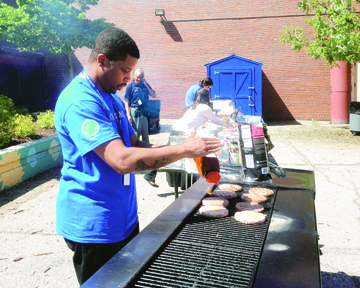
No Room For Error
The restart competition got kicked off with DPS’s Call for New Quality Schools (The Call), which invited “school developers” to submit “high quality designs” for the two schools to be restarted as well as proposals for new schools. Reynolds knew his basic design; he’d given it a new name (CTD). The hard part would be having his vision shine through while addressing every detailed requirement listed in The Call.
Comfortable with tapping the strengths of those around him, Reynolds met continually with staff, who, he said, “pushed me to define what makes our school different.”
Detecting a “woe is me, the District is out to get us” mentality, Reynolds coached his teachers toward this attitude: “We control what happens.”
“I told them, ‘People might not see you, but I know you guys are great teachers.’ See, I already had that turnaround mentality, you’ve got to be better than a teacher at another school, better than another principal … There’s no room for error when you’re turning a school around.”
Working together produced unity. At the Special Board of Education meeting on May 11, when applicants formally presented their plans, a dozen teachers surrounded Reynolds, all wearing resolute expressions and bright blue Greenlee sweatshirts.
At the beginning of that meeting, Greenlee parents pleaded to keep their principal. One young mother said tremulously, “My grandmother, who just passed away, worked at Greenlee for 26 years. She saw principals come and go. When Mr. Reynolds arrived, she knew he was the one we needed…”
Only one school emerged to challenge Reynolds for Greenlee’s restart: Wyoming-based Poder Academy. CEO Marco Martinez said he needed to take the school over because Greenlee, “despite infusions of help, has been drastically underperforming,” assuring the Board that with strict behavioral expectations, he would “turn the school and community around.”
The Work We Started
Martinez’s words — and DPS’s description of Greenlee as “persistently low-performing” — seemed to belong to a different world than the one inhabited by Greenlee teachers and parents.
When his turn arrived, Reynolds tied the two worlds together. “One thing I want to spell out clearly: if you don’t know us, it’s easy to say our students are broken, our teachers are broken, our community is broken. But once you work in our community, you see how strong it is …”
Asked by the Board what his new plan would change, Reynolds was hard put to give a specific answer. He’d added elements, notably a “birth to 5th” program to include very young children. But the basic concepts he ran the school on would remain.
On June 12, Reynolds spoke frankly to the Board, allowing that the restart process had pushed him to articulate “what makes our school unique. That’s where I wanted to end up … it’s just not how I wanted to get here.”
Having to draw so hard on his and staff’s resources drove him to be “an architect” for deeply held beliefs. “In the process, I bonded with my community. I put my name on it.”
And while others wish summer vacation could last longer, the staff, students and parents at Greenlee can’t wait for the new school year to begin.
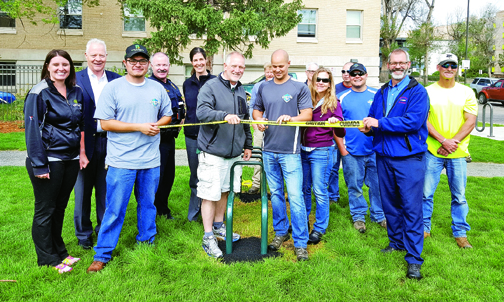
by Mark Smiley | May 26, 2017 | General Featured
Councilman Gets Glendale To Sit-up, Add Fitness Equipment
Addition Leverages Existing Appeal Of Park And Its Green Space.
by Glen Richardson
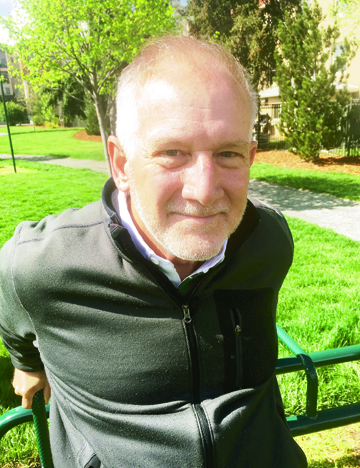
 Never mind the punishing diets, the gym dates and the doctors’ warnings; the quest to live a healthier, more active lifestyle has come to Glendale’s Infinity Park.
Never mind the punishing diets, the gym dates and the doctors’ warnings; the quest to live a healthier, more active lifestyle has come to Glendale’s Infinity Park.
New adult outdoor fitness equipment was officially unveiled in ceremonies at the park last month by the City of Glendale. Taking fitness outside of its traditional — and for some unappealing — gym setting and leveraging the existing appeal of Infinity Park and its green space adds new encouragement for residents to get outside this summer to rejuvenate, relax and refresh. Moreover, it’s what many of us want, need, desire and crave.
Glendale City Councilman Scott Brock came up with the idea of adding adult fitness equipment at Infinity Park South. It then took him several months of heavy lifting and pushing to get the City Council, Mayor Mike Dunafon and the city staff to approve the idea. Brock — who has served on the Glendale City Council since April 2016 — truly believes people should be involved, interested and aware of what’s happening in their neighborhood. He serves as the Council’s representative to the Regional Transportation District and to Four Mile Historic Park.
Pull In, Pull-Up
Once Josh Bertrand, Director of Public Works for Glendale and Infinity Park, and his staff completed installing the equipment a dedication ceremony and ribbon cutting was held the morning of May 9. T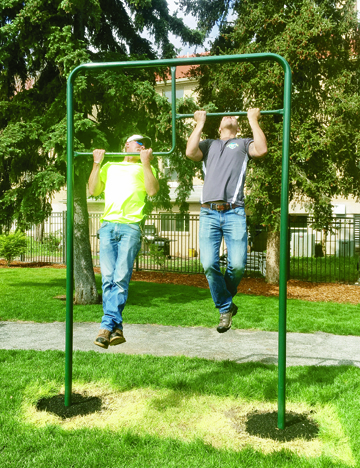 he equipment is from Miracle Recreation and includes an adult Sit-Up apparatus to improve life with sit-ups, crunches, leg lifts and other hard but fulfilling exercises.
he equipment is from Miracle Recreation and includes an adult Sit-Up apparatus to improve life with sit-ups, crunches, leg lifts and other hard but fulfilling exercises.
The newly installed Chin-Up module will help adults pull themselves to the top of the fitness ladder. Users will gain strength in their shoulders, upper back and bicep by engaging in pull-ups, chin ups and more.
Finally, there’s a Dip Station. It doesn’t matter whether you do calisthenics or weight lifting; dips have always been the single greatest chest and triceps builder. It is a complex exercise that amps up your metabolism and drives fat loss. Furthermore Dips make you look and feel amazing while delivering real performance gains.
Fulfilling Fun
The equipment is placed along the winding pathways inside the park behind the St. Andrew Abeline Seminary on Birch St. Placing the equipment in that area featuring park pavilions, picnic tables, barbecue grills, public lawn and a multi-purpose turf field encourages community and socialization. The outdoor fitness equipment is free to the user, encouraging people to work out together, and is available nearly any time of day.
Most prominently, of course, Infinity Park is the home to the Glendale Raptors, one of the nation’s premier rugby clubs. However, as Infinity Park continues to grow, it’s becoming increasingly interwoven into the cultural fabric of the Valley in innumerable ways — as an event space, as a place for family fun, plus a place that advances the health and fitness of all ages.
Infinity Park is the home to the Glendale Raptors, one of the nation’s premier rugby clubs. However, as Infinity Park continues to grow, it’s becoming increasingly interwoven into the cultural fabric of the Valley in innumerable ways — as an event space, as a place for family fun, plus a place that advances the health and fitness of all ages.
Rugby is the cornerstone for a variety of fitness-oriented outlets at Infinity Park. The Glendale Sports Center delivers the experience of a high-priced gym at a fraction of the price. Community can also take full advantage of the full-size basketball court, personal trainers, sports leagues, fitness and dance classes, and luxurious locker rooms.

 The Valley isn’t lacking for festivals, but a select few consistently find a way to differentiate themselves in a crowded field. The 10th annual celebration of Jewish Arts, Authors, Movies & Music Festival (JAAMM) has distinguished itself from the crowd. The 18-day one-of-a-kind culture extravaganza opened Oct. 26 and Valley residents have an array of awesome choices as events continue through Nov. 12 at the Mizel Arts & Culture Center (Jewish Community Center).
The Valley isn’t lacking for festivals, but a select few consistently find a way to differentiate themselves in a crowded field. The 10th annual celebration of Jewish Arts, Authors, Movies & Music Festival (JAAMM) has distinguished itself from the crowd. The 18-day one-of-a-kind culture extravaganza opened Oct. 26 and Valley residents have an array of awesome choices as events continue through Nov. 12 at the Mizel Arts & Culture Center (Jewish Community Center). y of nearly 2,000 German-born American Jews who enlisted in the U.S. Army and were sent overseas as a special unit interrogating German POWs. Known as the “Ritchie Boys,” their contributions in fighting Hitler were invaluable. He speaks in Phillips Social Hall Nov. 7 at 11 a.m. and the lecture is free for veterans.
y of nearly 2,000 German-born American Jews who enlisted in the U.S. Army and were sent overseas as a special unit interrogating German POWs. Known as the “Ritchie Boys,” their contributions in fighting Hitler were invaluable. He speaks in Phillips Social Hall Nov. 7 at 11 a.m. and the lecture is free for veterans. z and if you’re one of them don’t miss award-winning jazz pianist Tamir Hendelman and his trio playing in the Wolf Theatre Nov. 11, 7:30 p.m. Playing alongside upright bassist Alex Frank and jazz drummer Dean Koba they are a phenomenon. Together the trio explores jazz standards, Brazilian music, blues and Tamir’s Israeli roots.
z and if you’re one of them don’t miss award-winning jazz pianist Tamir Hendelman and his trio playing in the Wolf Theatre Nov. 11, 7:30 p.m. Playing alongside upright bassist Alex Frank and jazz drummer Dean Koba they are a phenomenon. Together the trio explores jazz standards, Brazilian music, blues and Tamir’s Israeli roots.





















